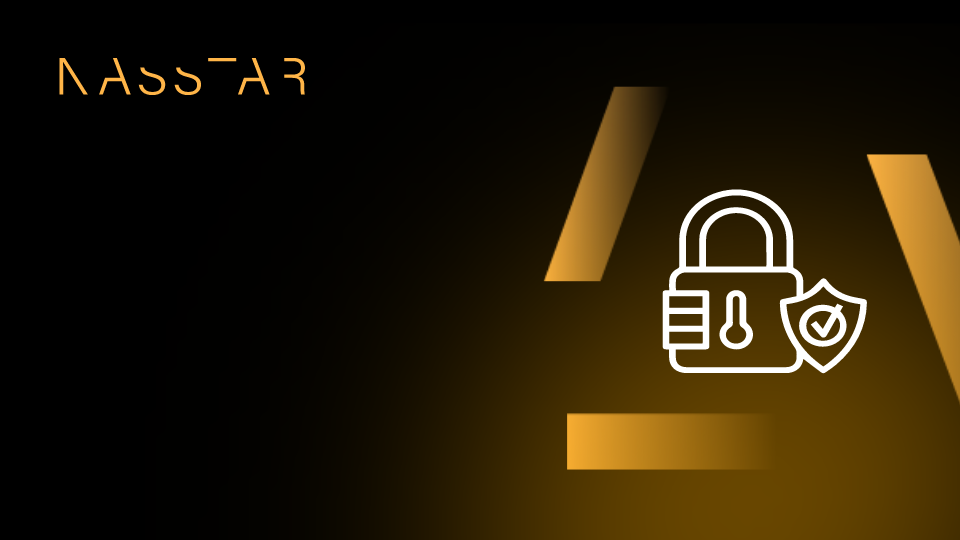The top 10 cloud security best practices every business should know

This blog has been expertly reviewed by Jason Oliver, AWS Ambassador and Technical Practice Lead at Nasstar.
Cloud security — and cyber security in general — is a balancing act. You need to ensure robust defences are in place to protect key systems, data, and people. At the same time, you need to allow your business to run efficiently.
A recent survey highlighted the importance of both. 79% of firms pinpointed cloud security as a primary concern. The other highest-scoring trend? Cloud optimisation. These results show the need to get the most from your cloud environment while keeping apps, workloads, and data secure. ensuring the highest security possible.
So, how can companies improve their security posture in the most efficient way? In this blog, we’ll explore 10 cloud security best practices that can help your business stay secure.
What is security in cloud computing?
Securing your cloud computing infrastructure means many things, including:
- Protecting data from falling into the wrong hands
- Ensuring login attempts are from genuine employees
- Keeping key services online
- Mitigating threats before they impact business
- Being ready should an incident happen
But remember, cloud security isn't one-size-fits-all. From warding off social engineering and malware threats to preventing data loss and DDoS attacks, the best approach varies based on the cloud computing model you use.
Navigating multi-cloud and hybrid cloud requires tailored security strategies. If you work with prominent cloud providers, such as AWS and Microsoft Azure, you can benefit from their advanced services and tools. In any environment, it’s crucial to know which parts of system security are your responsibility.
Why is cloud security important?
Cloud security mirrors the principles of on-premise security — to protect platforms, data, and workloads from harm. Given that cloud resources are, by their nature, connected to the internet, there is often more opportunity for cyber incidents. This is especially true in the era of remote working.
Fundamentally, you need to ensure that only authorised users can access your data. The cost of a breach now runs into the millions of dollars, and the impact of downtime grows every year. With such high stakes, the best cloud security strategy is to have a plan and be proactive.
Jason Oliver, AWS Ambassador and Technical Practice Lead at Nasstar, says: “Cloud security is paramount as it protects sensitive data and prevents unauthorised access. With the vast amount of information stored in the cloud, it’s imperative to have robust security measures in place to ensure data remains secure.
“By implementing proper security protocols, individuals and businesses can rest assured that their data is protected against cyber-attacks and other threats. Moreover, solid cloud security helps maintain compliance with industry standards and regulations, building trust with customers and partners. Investing in cloud security is vital for safeguarding personal and business information and is a decision that must be considered.”
Protecting your cloud environment: Top 10 cloud security best practices
1. Identify your infrastructure to create a cloud security strategy
Having a comprehensive view of your infrastructure is a vital first step. Identify potential weaknesses or attack vectors to help build your cloud security strategy. Think about where you store your sensitive data and how to protect it.
For Infrastructure as a Service (IaaS) environments, you will need to design your security controls from the ground up. Platform as a Service (PaaS) and Software as a Service (SaaS), on the other hand, may require less time on your part. Remember to pay special attention to protecting APIs and internet-facing applications, as these often present appealing targets to cyber attackers.
2. Understand your shared responsibility model
Familiarise yourself with your service level agreement (SLA). Knowing where your duties lie is a key step towards protecting your cloud. AWS, Azure, and GCP – the leading cloud service providers – follow a shared responsibility model when it comes to cloud security.
While providers manage underlying hardware security, you’ll usually be expected to handle security at an infrastructure and application layer. Review which parts of security are your responsibility, and which are your cloud service provider's. Then you can plan accordingly.
3. Establish cloud security policies
Armed with the knowledge of your responsibilities and system requirements, you can begin to design security policies. Aim to create strategies that protect your key systems without hampering daily operations. If possible, use automation to reduce human error and speed up routine tasks.
You’ll then configure your fundamental security tools, such as firewalls and intrusion detection systems (IDS), to comply with these policies. A web application firewall (WAF) based on established Open Web Application Security Project (OWASP) threats can be particularly effective at detecting and protecting against potential danger. Remember, safeguarding your key workloads should be a central aspect of your strategy.
4. Use strong identity and access management (IAM)
Around 50% of all successful attacks use stolen employee credentials to gain access. So even with the best security practices in place, human error still has the potential to open up system access.
As such, it’s crucial to use granular access controls and strong IAM policies. These can manage identities securely, providing high levels of protection without inconveniencing users day-to-day.
The key to this is giving the right permissions to the right people. The aim of the game is to make it difficult for attackers to breach your system. Using the principle of least privilege and zero-trust access policies can help thwart many common security threats.
5. Employ multi-factor authentication (MFA)
You can further enhance the security of your cloud platforms by adopting MFA for staff logins. This security measure, already mandatory in many industries for compliance requirements, uses methods ranging from hardware tokens to biometrics to verify login attempts. Should an employee’s credentials become compromised, MFA will provide an extra layer of protection for your system.
You can also use single sign-on to simplify the login process for employees accessing multiple services. Finally, using an MFA system that alerts security teams to multiple failed login attempts can help you spot and block attacks before they compromise your environment.
6. Conduct staff cybersecurity training
In a Google poll, over half of respondents reused passwords, and 40% didn't know the meaning of "phishing". This highlights the importance of training staff in security basics and common cyber-attack methods.
As one of the most common methods hackers use to gain unauthorised network access, it’s essential that you teach your team to spot phishing attempts. Explain to them the potential dangers of reusing passwords and how to protect sensitive data. From a technical point of view, helping your IT staff acquire cybersecurity certifications will ensure ongoing awareness and knowledge in a constantly evolving field.
7. Secure every endpoint
It’s become increasingly difficult to pinpoint where a cloud environment begins and ends. The boundaries can be blurry, especially given the complexity of endpoint security concerns.
It’s important to remember that systems and data might be vulnerable to attacks from many angles. Your endpoints could include personal devices of remote employees, third-party cloud applications, and any number of SaaS platforms.
Continuous monitoring and protection of these endpoints and their login activity can help you identify potential threats early. Consider using cloud security solutions that enable you to configure endpoints remotely for an added layer of protection.
8. Build a culture of data protection
In 2023, 82% of data breaches involved cloud-based storage. That’s why it’s so important to create a strong culture of data security within your organisation. Remember you need to protect data in storage and when moving between workloads.
As a fundamental protection method, you should encrypt sensitive data in storage using robust encryption keys. It's also essential to encrypt data when in transit between systems, especially when connecting to public cloud services.
Of course, the ideal outcome is to prevent unauthorised access to your cloud data altogether, but encrypting data to prevent outside eyes from reading it is another vital layer of protection.
9. Have an incident response plan in place
Once your defences are in place, you can plan for the future. You should equip your security team with real-time monitoring tools that can alert you to potential security incidents. Should something happen, you need to know straight away.
That’s why having a robust incident response plan, with clear roles and responsibilities, is critical. Such a plan will allow you to react to security breaches in a controlled, timely and effective manner, minimising potential damage and downtime.
10. Run security reviews and make improvements
Finally, look for areas to improve. Regular internal and external security reviews are essential and will help you spot new vulnerabilities and misconfigurations in your cloud deployments before cyber criminals do. After all, it's not uncommon for security issues to go unnoticed until they're exploited by hackers.
Misconfigurations are often the culprit behind successful breaches of cloud workloads. Therefore, a proactive approach to closing potential security gaps is crucial for maintaining a secure cloud environment.
How Nasstar can help
A modern cloud infrastructure needs several lines of defence. From planning to execution and making improvements, it’s important to use cloud security best practices to secure data and protect your business.
At Nasstar, we understand that cyber security is an ongoing challenge for companies of all sizes. Our award-winning security services can help you take a more proactive approach, providing 24/7 protection for your critical assets.
Speak to a specialist to learn more.
Frequently Asked Questions
Cloud Security Posture Management (CSPM) tools analyse cloud environments using best practices and recognised security risks. Some CSPM solutions provide proactive alerts. More advanced tools employ automation to automatically resolve issues for companies, mitigating problems before they impact performance.
The cloud is often more secure than traditional on-premise data centres. This is mainly due to the investments cloud providers put into advanced hardware and data protection. Many cloud services come with fundamental security features, such as role-based authentication. However, companies must also apply their own robust security measures to safeguard cloud storage and company operations.
Cloud security is a collaboration between the service provider and the customer. The responsibility split usually varies based on the cloud service type. For example, in Infrastructure as a Service (IaaS), companies shoulder more of the security responsibilities. Meanwhile, with Platform as a Service (PaaS) and Software as a Service (SaaS), providers will take on a larger portion of the security duties.
Cloud security management is a robust protective framework. It’s a defined set of workloads and their protections, helping ensure your data remains shielded from potential danger. A comprehensive cloud security strategy typically combines preventative measures and corrective best practices to prepare for any outcome.
Security by design means designing cloud systems with security at the front of mind. Including security measures into their architecture, design, and implementation guarantees they remain secure by default. This proactive approach to security significantly reduces the chances of vulnerabilities and strengthens the overall safety of cloud systems. By implementing this approach, organisations can confidently protect their cloud-based systems from cyber threats and data breaches.
There are two common types of security reviews: penetration testing and cloud security assessments.
Penetration testing is the process of evaluating the security of a computer system or network by simulating an attack from a malicious source. It involves identifying vulnerabilities and weaknesses in the system and determining the likelihood of an actual breach occurring. This type of testing is critical for businesses seeking to protect their data and assets from cyber threats.
A cloud security assessment involves evaluating the risks and vulnerabilities of your infrastructure, applications, and data, so you can identify any weaknesses that cyber attackers could exploit. By reviewing your security controls and your provider's security policies and procedures, you can ensure that your cloud environment is secure and compliant.



